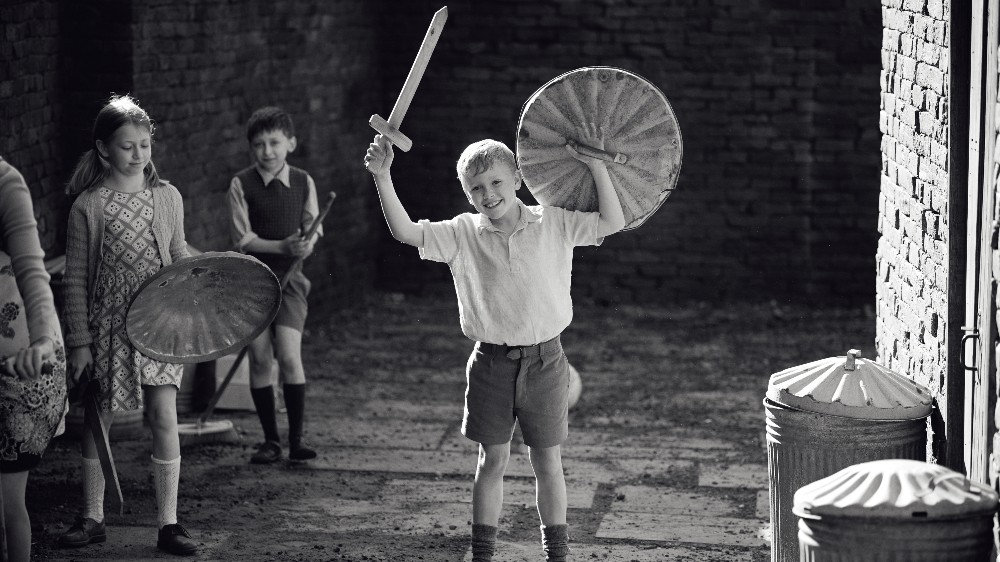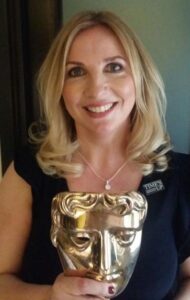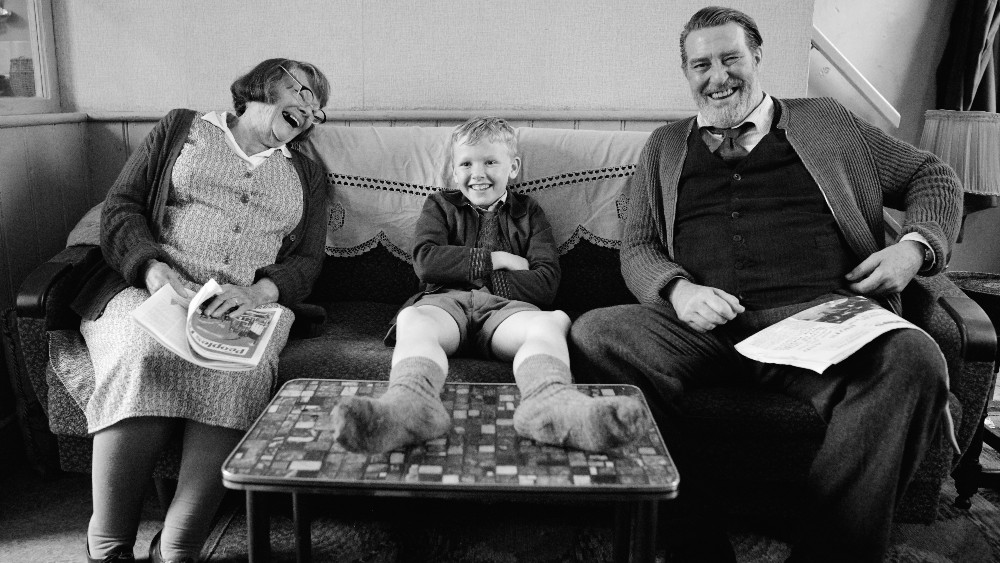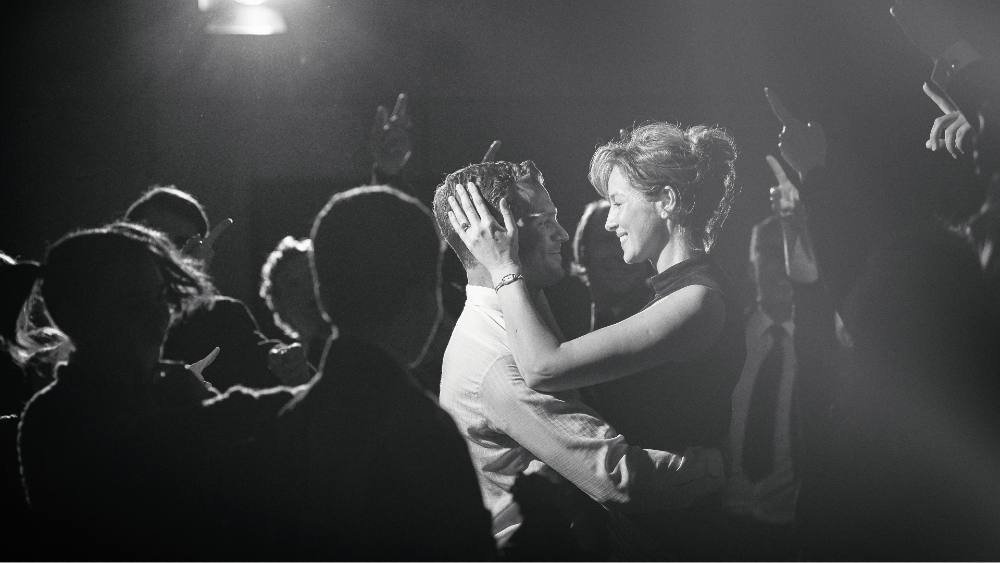
A young boy discovers life in Belfast, Kenneth Branagh‘s tribute to his turbulent hometown. Set in the late 1960s, the Focus Features film explores a blue-collar neighborhood torn apart by religious sectarianism. Through Buddy’s eyes (played by Jude Hill), Branagh explores a world of play, school, church, theater, music, and family.
This is the third collaboration between Branagh and editor Úna Ní Dhonghaíle, after All Is True and Death on the Nile. The Dublin native co-directed and edited the documentary Invisible Man, and has extensive television credits, including Wallander and The Crown.
Ní Dhonghaíle spoke with Below the Line on Zoom.

BTL: With its shifting timelines and plot strands, Belfast must have been a complex film to edit. When did you start on the project?
Úna Ní Dhonghaíle: Ken offered me the script when we were working on Death on the Nile. I read it and I was like, “Yes, please.” He’s a master storyteller.
I was there from the first day of principal photography, but before shooting even started, Ken went to Belfast with Haris Zambarloukos, the cinematographer. They shot things on their phones and cameras. Ken mentions a Van Morrison song, “And the Healing Has Begun,” in the beginning and end of the script. It’s a new track Van had written for Ken.
I put their footage together with the Van Morrison song and with the voice-over Ken had at the time and some interviews he had done. It was like a temporary structure, an opening template to see how it felt or if it worked. We ditched the voice-over, amalgamated things, brought down the shots to help when Ken went back to film the opening color sequence.
When principal photography began on the street set, I was assembling what he was shooting every day.
BTL: So the decision to drop the voice-over happened before principal photography?
Ní Dhonghaíle: Yes. We were pretty quick with making decisions because this is an independent film and time was tight. We were shooting in September and locked in by early January. I was pulling everything together at first with my Assistant Editor Carly Brown and Second Assistant Lydia Mannering.
In August, I emailed Ken about sound he could think of as a child, something that would be evocative of back then. He wrote things like an ice cream van, the rag-and-bone man, a foghorn. That helped me build up a sound design, so that when Ken came into the cutting room after the first week of shooting, he was able to watch the assembly with a rich sound design.
We wrapped at the end of September, I worked over the weekend, and by Tuesday the next week, Ken was able to watch the full film, which at that stage was 2:20. Then we dove in, began to change things.
We edited remotely. I worked in Dublin, he had an Avid in his house in London, so did my assistant. We worked old school, we didn’t use Evercast. We each had a drive, I would download onto it every day and my assistant would update Ken’s drive. He could just hit play and watch it, click through if there were different versions.
As we were shortening the film, there were beautiful scenes we were beginning to lose. We found that by collapsing them, using just moments, we could retain their beauty and lyricism. These little vignettes, with Van Morrison’s music, help the flow of the film, which is so memory-based. But too many sequences of stillness in a row could cause the film to plateau. So the challenge in the editing suite was how do we keep that movement and keep the joyousness and to allow those little vignettes to give a little offering of something.
Van Morrison kindly sent us two cues, “Instrumental Version One” and “Instrumental Version Two.” We were able to use the cues for scenes, for example, after Buddy attends Mass and the vicar is giving his “two road” sermon.

BTL: How do you ever cut away from Ciarán Hinds?
Ní Dhonghaíle: We did that with great difficulty. He’s wonderful, isn’t he? There’s a scene where he’s teaching Buddy math, and it’s a case where we had coverage of the wides, and coverage of Pop, but we didn’t have a shot of Buddy. That’s a situation where I’m thinking we need the child. If Ken had not included Buddy, it would have been very much of an auteur feeling. You realize you have to see that little face.
Below the Line: Some of the scenes in Belfast unfold in a linear fashion, like the cemetery funeral where you sequence shots in a straightforward manner. And then there are music sequences where you have much more freedom.
Ní Dhonghaíle: Ken shot some scenes in a very purist way. And then other scenes he knew he wanted a bit more texture and vitality. For the riots and the dancing, he had two cameras. Then we had scenes with a single camera set-up with maybe two or three shots.
But even the funeral scene we actually did cut. We interrogated structure constantly. We did see what it was like to start on the coffin, then go wide, then go close. We had a version with music instead of the vicar speaking. We settled on what we had because we thought it earned its place by the time we came to “Everlasting Love.”
BTL: Does Branagh tend to shoot a lot of coverage?
Ní Dhonghaíle: For Death on the Nile, we did shoot a lot of coverage. With Belfast, he knew very much what he wanted. For example, the scene where Buddy was on the toilet talking to Pops and Granny [Dame Judi Dench] is in the background, that was very simply done. We had a lot of takes, but Ken’s confidence in that composition meant he didn’t do close-ups on the boy or Pops. Those things that must have been memory-based for Ken, he did a lot of takes, but kept the coverage simple. For things like “Everlasting Love,” yes, we had a lot of coverage.
BTL: “Everlasting Love” is the song Buddy’s father Pa (Jamie Dornan) sings to his Ma (Caitríona Balfe) in a nightclub in front of a rhythm-and-blues band. Can you talk about editing that scene?
Ní Dhonghaíle: It came together quite organically. What’s really good about an independent film is that your first instincts really matter. You can lock the film before you overwork too many things because you’ve gone with your gut instinct. Ken shot this with his instinct, I cut it with my instinct.
You can imagine if we’d been working on the film for nine months, we could have been revisiting things, interweaving stories and things.
I did cut it a couple of times, mainly to try to plant Granny because it was just after Pops had died. So how do we make “Everlasting Love” resonate without the audience being appalled that we have this euphoric scene right after a death. We had to make sure that we had Granny register as sad, and then Buddy goes to her, so they were key narrative points to weave in, in the midst of this choreographed dance.
I think that’s where myself and Ken are very in tune with each other. We both try to find the humanity in a performance and even in a dance sequence or an action sequence. You have to keep that subtext of what’s actually important to what’s going on. I could’ve cut it with a lot more trumpets, a lot more flares and things, but we had to keep this truthful and authentic to the emotion of those characters.

BTL: Did you manipulate the footage at all?
Ní Dhonghaíle: We did a few split screens and time warps, they were our main thing. Ken shot a scene with a bus leaving the frame in slow-motion, 60 fps. We wanted to begin it faster, then move to slow, so I was able to use time warp on it. But then we needed a bit more time to go out wide. Thanks to Matthew Glen, who was the VFX supervisor, we could create a smoke effect that allowed me the pacing we needed before we left the scene. Hopefully, these tools don’t draw attention to themselves except in a way that moves you.
BTL: The transitions in Belfast are superb. I’m thinking of how you go from Buddy watching High Noon on TV, to a man with a torch guarding the street at night, then Pa returning from working in England.
Ní Dhonghaíle: We reordered those scenes with Pa to keep the flow of the film. I went from the image of Gary Cooper to that high angle looking down at this little man walking. Ken referenced High Noon in his script, and he had a few other references as well. One Million Years B.C., Chitty Chitty Bang Bang, Scrooge when they go to the theater.
Themes of escape or the Wild West sort of descend into how Northern Ireland has become like a Western Buddy had seen.
BTL: You also show a clip from The Man Who Shot Liberty Valance. This film reminded a lot of John Ford, for example in the tight compositions of people within a frame reacting to each other.
Ní Dhonghaíle: Have you seen All Is True? To me, that was really John Ford. When Shakespeare returns home silhouetted in the doorway, it was like something in The Searchers.
Belfast is infused with Ken’s directorial vision. Not only influences like John Ford, but references to Thor, Agatha Christie, the Tottenham Hotspurs because he’s a fan. They get into the fabric, the DNA of the film, and make it his. Even if they’re just private things, anyone who knows him or his work with spot them.
I think what I bring to Ken, what we both have, is loving films where the humanity shines through. We work well together in keeping an eye on empathy for character. Northern Ireland is a complex place. I love that he called this film Belfast, he’s really made a love letter to his city of birth, his family, his neighbors.
For about 15 years, I’ve beaten about that we’ve never had a film set in Northern Ireland that celebrates great friendship. As soon as I read Ken’s script, I couldn’t believe that he had actually written just that, something that chimes with my family’s experience. So it was a real privilege to do this.
Belfast opens in theaters nationwide on Friday, November 12.
All photos courtesy Focus Features, except where noted. Photographer: Rob Youngson





